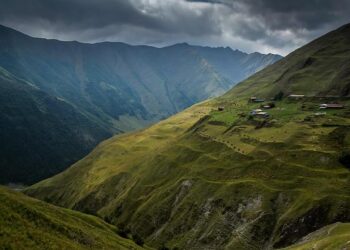
Dijon’s city centre is a UNESCO World Heritage Site that has been completely pedestrianised.
Photograph by Hemis, AWL Images
Burgundy’s wine-soaked medieval capital has long been a cradle of invention, art and gastronomy.
This article was produced by National Geographic Traveller (UK).
There are many reasons to visit the capital of France’s Bourgogne-Franche-Comté region — not least its setting amid the Burgundy vineyards, its gastronomic legacy and its wealth of history and art. Once part of the Roman Empire and capital of the Duchy of Burgundy from the 10th to 15th century, Dijon has a pedestrianised, UNESCO-listed historic heart with many medieval townhouses, Renaissance-style mansions and romanesque and gothic landmarks. Several of its museums have started offering free entry in recent years, while contemporary art has been integrated into outdoor public areas. In 2022, the opening of Dijon’s Cité Internationale de la Gastronomie et du Vin — a wine education, retail and leisure complex — also brought new energy to the city.
Several centuries of the city’s past are represented across the Palace of the Dukes of Burgundy complex. Climb the 316 ancient stone steps to the top of its 150ft-high Tour Philippe le Bon for panoramic views over the city. Afterwards, explore the palace’s Musée des Beaux-Arts de Dijon, whose walls are covered with medieval masterpieces and contemporary art. Founded in 1787, it reopened in 2019 after a 10-year renovation.
From here, stroll to the 13th-century Church of Notre-Dame of Dijon to marvel at the automaton clock atop its south tower and search for the famous owl — a small medieval carving that’s regarded as a good luck charm and symbol of the city. Join the locals and tourists who gather here to make a wish while rubbing it with their left hand.
Rue de la Chouette (Owl Street) is on the north side of the church and it’s here you’ll find boutique-atelier La Moutarderie Fallot, which makes its legendary Dijon mustard using a grindstone. Tastings of the original are offered alongside newer creations that introduce flavours such as blackcurrant. Further along the street is Maison Millière, a 1483 former merchant house that’s now a restaurant, wine bar and tea room. It served as a backdrop for the 1990 Gérard Depardieu film Cyrano de Bergerac.
To sample more of Dijon’s celebrated products, head to the Les Clos Vivants wine shop. It hosts daily tastings of Burgundy wines along with another French favourite, the blackcurrant liqueur crème de cassis, which originates from Dijon. Also don’t miss Les Halles Market, where local producers sell cheeses, snails and all manner of baked goods in a cavernous wrought-iron structure designed by Dijon-born engineer Gustave Eiffel.
Walk down the main shopping street Rue de la Liberte, lined with 15th-century buildings and home to a satellite branch of Paris’s high-end Galeries Lafayette department store. The thoroughfare leads to Dijon’s first public garden, the 19th-century Jardin Darcy, a verdant pocket of ponds and waterfalls that’s worth a stroll. You can get park snacks from nearby Mulot & Petitjean, a heritage store specialising in gingerbread that’s made according to a traditional recipe — Dijon’s cake-like gingerbread is famed across France.
It’s a 20-minute walk south to Dijon’s newest cultural and gastronomic hub, Cité Internationale de la Gastronomie et du Vin. Ten years in the making and partially housed in a grand former hospital, it offers interactive exhibits on French gastronomy and wine, tasting experiences and workshops plus a wealth of shops, restaurants and bars to hop between.
For a place to stay, try Mama Shelter on the edge of the historic centre, which opened its Dijon branch in 2023. Stylish rooms and an in-house cinema and bar-restaurant are complemented by painted ceiling murals that take inspiration from local attractions such as Burgundy’s vineyards.
Published in the March 2024 issue of National Geographic Traveller (UK).
To subscribe to National Geographic Traveller (UK) magazine click here. (Available in select countries only).
>>> Read full article>>>
Copyright for syndicated content belongs to the linked Source : National Geographic – https://www.nationalgeographic.com/travel/article/guide-to-dijon-burgundy-wine-medieval-capital































